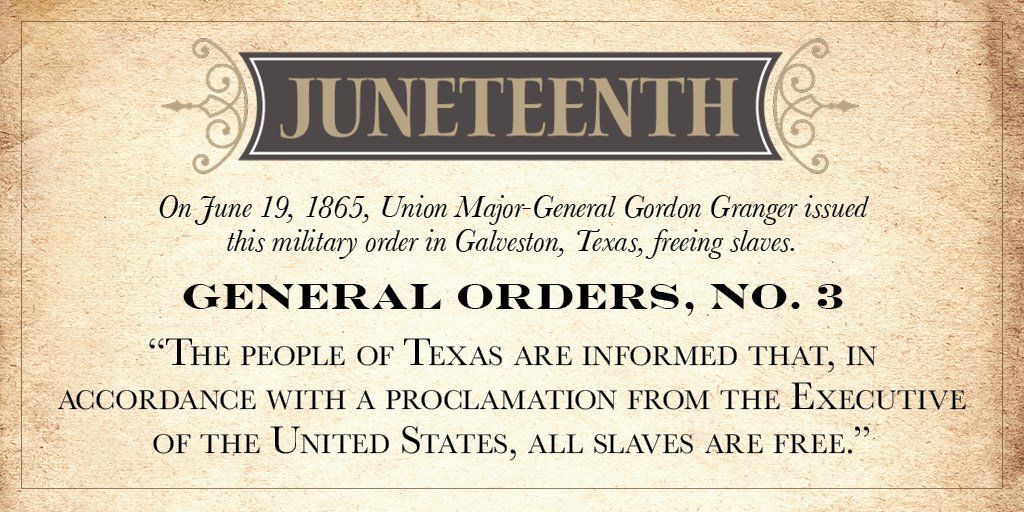The history of Texas is distinctively different from other states because of its revolt from Mexico, its experience of being an independent republic, and finally, its surrender to statehood on December 29, 1845. So, even though Robert E. Lee surrendered to General Ulysses S. Grant on April 9, 1865, the Texas Confederate soldiers continued to fight. The Civil War’s last battle took place on Texas soil on May 13, 1865, was a Confederate win at the Battle of Palmito Ranch near Brownsville, Texas.
On June 2, 1865, Confederate General Kirby Smith surrendered in Galveston to the Army of the United States of America. It became clear that the Confederate armies were collapsing, and soldiers were deserting in large numbers. As a result, Texas became a land of turmoil.
General Gordon Granger of the Army of the United States of America arrived on June 19, 1865, in Galveston to command all the troops, restore some semblance of order, and announce that all enslaved people were free. Galveston was a strategic city because it was the largest city in Texas and an important port city where cotton was shipped to the world. Thus, it was the perfect location to announce General Order No. 3.
It is not clear how General Order No. 3 was disseminated. Some historian accounts have Granger reading it from his balcony headquarters; others indicate that it was read in several places throughout the city. Regardless of how it circulated, it had a profound effect on the population. Whites reacted violently to the order that “all slaves are free” and no longer the property of former masters.
General Order No. 3:
“The people of Texas are informed that, in accordance with a proclamation from the Executive of the United States, all slaves are free. This involves an absolute equality of personal rights and rights of property between former masters and slaves, and the connection heretofore existing between them becomes that between employer and hired labor. The freedmen are advised to remain quietly at their present homes and work for wages. They are informed that they will not be allowed to collect at military posts and that they will not be supported in idleness either there or elsewhere.”
Two months after Granger departed Texas in August, the federal agency set up to help the newly freed people in the wake of the change of their status, the Freedman’s Bureau, opened a Texas branch in Galveston. General Oliver Howard was to run this Freedman’s branch. However, even with the assistance of Brigadier General Edgar M. Gregory, the job was not effective. Texas was too big with too much violence against former slaves to carry out the Bureau’s job.
June 19, 1865, became the official date for the end of slavery.
Envisioning Emancipation, by Deborah Willis & Barbara Krauthamer, Temple University, pp 134, 161, 162
On Juneteenth, by Annette Gordon-Reed, Liveright Publishing Co.

